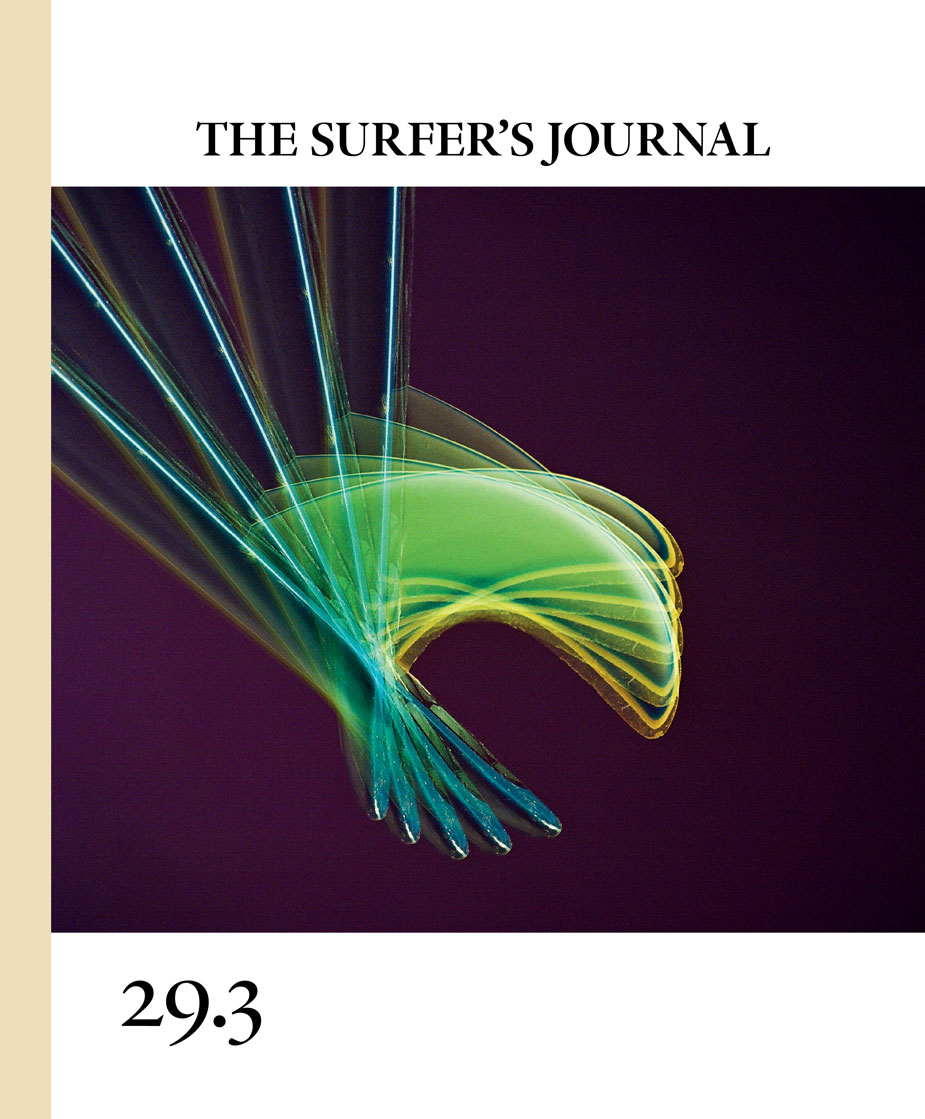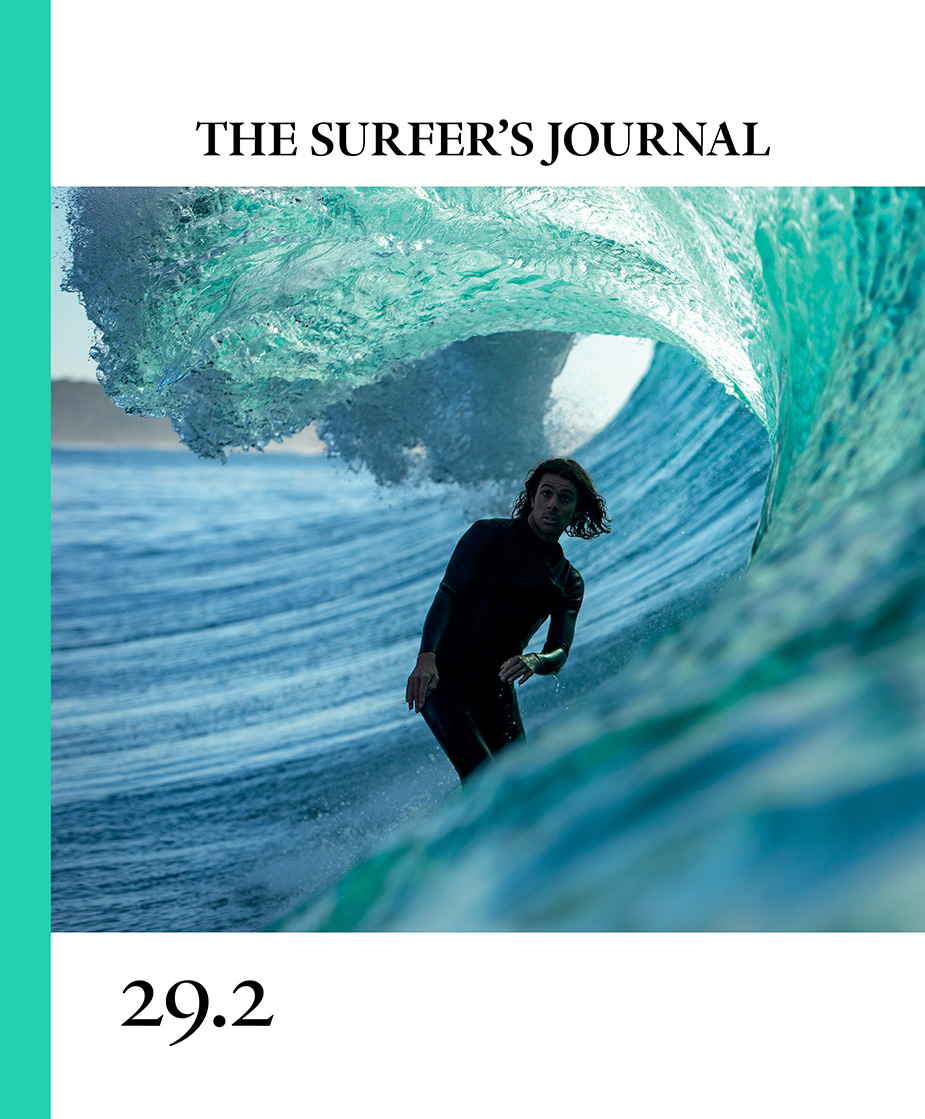
29.4
On the cover: Mikey February reminds us that good style is predicated on not thinking about style. Inside the new issue, we hit check-points from Alaska to the Azores, take a close visual study of Tom Servais’ last decade of high-profile surf shooting, and pay our culture collection fee to the modern skimboard scene. Profiles of surfing satirist Sterling Spencer and shortboard-revolution performance pusher Sharron Weber lend human interest touches, while Nate Tyler’s hand-built home in Central California and surfboards recycled as signage on the North Shore are explorations in atypical craftsmanship.

















